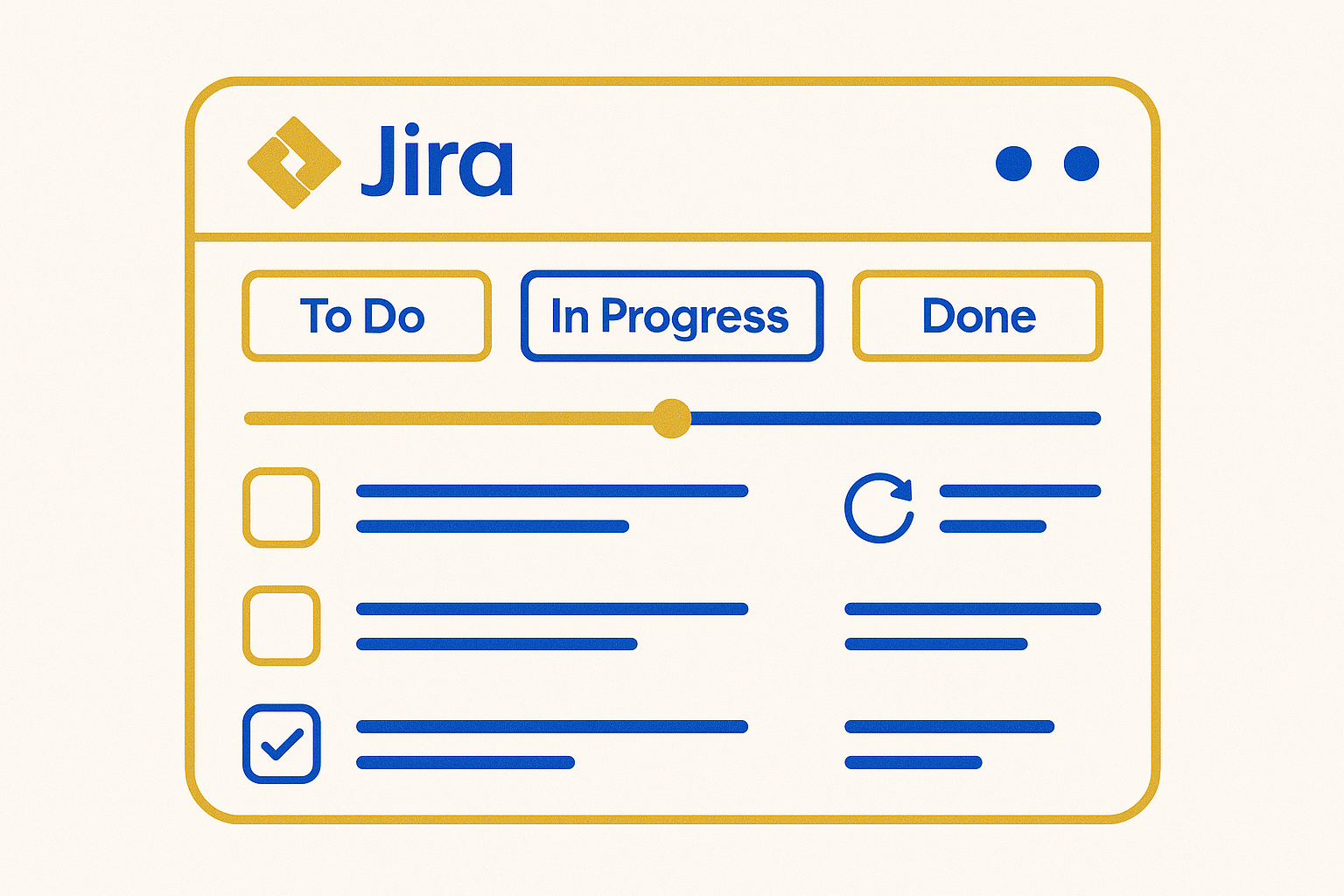The practice of writing test cases dates back to the early days of software development, but it gained significant prominence with the evolution of structured software testing methodologies in the 1970s and 1980s. In the early days of software development, testing was often an informal and ad-hoc process. Programmers and developers would manually verify their code’s correctness and functionality based on their understanding of the requirements. While this approach could catch some defects, it lacked a systematic and standardized way to ensure comprehensive testing.
The need for more structured testing methodologies emerged as software applications grew in complexity and size. In the 1970s, the concept of structured programming became popular, which emphasized breaking down software programs into smaller modules or functions. This approach led to the emergence of structured testing methods, and the practice of writing test cases began to take shape. During the 1980s, as software development practices matured, testing gained recognition as a distinct phase in the software development lifecycle. The advent of structured testing methodologies, such as black-box testing and white-box testing, brought further emphasis on writing test cases.
The software industry’s adoption of the waterfall model and other software development life cycle models further promoted the formalization of testing activities, including the documentation of test cases. This approach allowed for more comprehensive testing and better management of the testing process. With the rise of object-oriented programming in the 1990s and the increasing complexity of software systems, writing test cases became an essential aspect of software quality assurance. The adoption of agile methodologies in the 2000s further emphasized the need for test-driven development (TDD) and the creation of test cases before writing code.
Today, writing test cases is an integral part of the software testing process, irrespective of the development methodology used. The practice ensures that software applications are thoroughly tested, defects are identified early, and the overall quality of the software is improved. As software continues to evolve and become more intricate, writing test cases remains a critical practice in ensuring reliable and robust software products.
Why test cases matter
Test cases play a crucial role in the success of an organization involved in software development. Here are several reasons why test cases matter for an organization:
- Quality Assurance: Test cases ensure that software products meet the desired quality standards. By systematically testing functionalities and scenarios, organizations can identify and address defects early in the development process, leading to higher-quality software.
- Customer Satisfaction: High-quality software that meets user expectations leads to satisfied customers. Test cases help ensure that the software performs as intended, providing a positive user experience and building customer trust and loyalty.
- Cost Savings: Detecting and fixing defects early through thorough testing reduces the cost of bug resolution. Addressing issues at later stages of development or after release is significantly more expensive and time-consuming.
- Brand Reputation: Software with a reputation for reliability and robustness reflects positively on the organization’s brand. Conversely, software with frequent issues can harm the organization’s reputation and erode customer confidence.
- Compliance and Regulations: In industries with specific regulatory requirements, thorough testing and documented test cases demonstrate compliance with relevant standards, ensuring legal and industry compliance.
- Risk Mitigation: Properly executed test cases help identify potential risks and vulnerabilities in the software. Mitigating these risks before deployment minimizes the chance of critical failures or security breaches.
- Time Management: Test cases provide a structured approach to software testing, optimizing the testing process and improving time management. Efficient testing allows for timely software releases and faster time-to-market.
- Continuous Improvement: Organizations can learn from test case outcomes and use the data to improve development processes, identify areas for enhancement, and implement best practices in future projects.
- Scalability and Flexibility: With well-documented test cases, organizations can easily scale testing efforts as the software evolves or new features are introduced. Test cases provide a foundation for adapting testing strategies to meet changing project requirements.
- Collaboration and Communication: Test cases provide a clear and standardized way for testers, developers, and stakeholders to understand the expected behavior of the software. This fosters effective communication and collaboration among team members.
- Compliance with Development Methodologies: Test cases are integral to agile methodologies like test-driven development (TDD) and behavior-driven development (BDD). They align with iterative and incremental development processes, promoting software quality throughout the development lifecycle.
We can say that, test cases matter significantly for an organization as they ensure software quality, customer satisfaction, cost savings, and brand reputation. Properly executed test cases enable organizations to mitigate risks, adhere to regulations, and continuously improve their software development processes. The practice of writing and executing test cases is essential for organizations committed to delivering reliable, high-quality software products that meet or exceed customer expectations.
Owner of test cases – Who typically writes test cases
In the software development and testing process, test cases are typically written by software testers or quality assurance (QA) professionals. These individuals specialize in testing software applications to ensure their functionality, reliability, and adherence to specified requirements.
The responsibilities of a software tester or QA professional include:
- Requirement Analysis: Testers closely collaborate with stakeholders, developers, and business analysts to understand the software’s requirements and functionalities. This analysis helps them define the scope and objectives of the testing process.
- Test Planning: Testers create a comprehensive test plan that outlines the testing strategy, scope, timelines, resources, and the types of tests to be conducted. They identify the areas that require testing and determine the testing techniques to be employed.
- Test Case Design: Based on the software’s requirements, testers design test cases that cover various scenarios and test the functionalities comprehensively. Test cases are structured step-by-step procedures that specify the input data, actions to be performed, and expected outcomes.
- Test Execution: Testers execute the prepared test cases on the software application to validate its behavior and performance. During execution, they compare the actual results with the expected results to identify discrepancies or defects.
- Defect Reporting: When discrepancies are found, testers document and report them to the development team using bug tracking tools. They provide detailed information about the issue, along with steps to reproduce it, to facilitate quick resolution.
- Regression Testing: Testers conduct regression testing to ensure that new changes or updates do not adversely impact existing functionalities. They rerun relevant test cases to confirm that the software remains stable and functional.
- Test Documentation: Throughout the testing process, testers maintain thorough documentation of test cases, test plans, test results, and any other pertinent information. Well-organized documentation aids in traceability and knowledge sharing.
- Collaboration with Developers: Testers often collaborate closely with developers, providing them with feedback on defects and assisting in troubleshooting and verifying fixes.
It is important to note that the role of writing test cases can extend beyond dedicated testers, as developers, business analysts, and product owners may also contribute to the test case creation process in certain projects. However, the primary responsibility for writing test cases and ensuring the effectiveness of the testing process lies with the QA professionals or software testers.
Importance of writing good test cases
Here’s what comprises in a good test case
Title: The Importance of Writing Proper Test Cases in Software Development
Introduction:
In the dynamic world of software development, writing proper test cases holds paramount importance in ensuring the quality and reliability of software products. Test cases are systematic and structured procedures that help assess various functionalities of the software. They serve as a critical component of the software testing process, aiding in detecting defects, validating requirements, and enhancing the overall development workflow. This article explores the significance of writing proper test cases and how they contribute to successful software development.
1. Detecting and Preventing Defects:
Properly written test cases are essential for identifying defects and errors in the software. By systematically testing each component and feature, test cases help uncover flaws in the code, logic errors, or unexpected behaviors. Addressing these issues early in the development process reduces the cost and effort associated with fixing them later. Moreover, detecting and fixing defects promptly improves the overall stability and reliability of the software, leading to a more satisfied user base.
2. Validating Software Requirements:
Test cases are designed based on the software’s requirements, ensuring that each functional and non-functional aspect is thoroughly evaluated. Writing proper test cases allows developers to confirm whether the software functions according to the specified requirements. This process enhances the software’s compliance with user expectations and ensures that it aligns with the intended objectives.
3. Improving Code Coverage:
Well-structured test cases facilitate comprehensive code coverage, ensuring that all parts of the software are adequately exercised during testing. By executing multiple test cases that target different scenarios, developers can identify areas where the code may not function as intended. This process helps minimize the chances of undiscovered defects and enhances the overall robustness of the software.
4. Facilitating Regression Testing:
As software evolves through updates and enhancements, the risk of new issues arising in previously functioning areas increases. Properly written test cases support efficient regression testing, where existing functionalities are retested to verify that they remain unaffected by recent changes. This practice safeguards against unintended consequences and maintains the stability of the software.
5. Enhancing Team Collaboration:
Writing clear and concise test cases enhances communication between developers and testers. Test cases serve as a comprehensive reference, enabling both teams to understand the expected behavior and functionality of the software. Additionally, properly documented test cases foster a more efficient feedback loop, facilitating constructive discussions and accelerating issue resolution.
Conclusion:
The significance of writing proper test cases cannot be overstated in the software development process. Test cases play a pivotal role in detecting defects, validating requirements, and ensuring the overall quality and reliability of the software. By promoting comprehensive testing, proper code coverage, and efficient regression testing, well-crafted test cases contribute to a smoother development workflow and ultimately result in a successful software product that meets user expectations and stands up to the rigors of real-world usage.
Parts of a well written test case
A well-written test case is a crucial component of effective software testing. It provides clear instructions for validating the functionality of a software application. The key parts of a good written test case include:
- Test Case ID: A unique identifier that helps in tracking and managing test cases efficiently.
- Test Case Title/Name: A descriptive and concise title that summarizes the purpose of the test case.
- Description: An overview of the test case’s objective and the specific feature or functionality being tested.
- Preconditions: The necessary conditions or setup required before executing the test case. This ensures the software is in a known state before the test begins.
- Test Steps: A step-by-step list of actions that the tester must follow to execute the test case. Each step should be detailed and specific, including the input data and the actions to be performed.
- Expected Result: A clear and unambiguous description of the expected outcome or behavior of the software after executing the test case.
- Actual Result: The actual output obtained when executing the test case. Testers use this section to record the observations during testing.
- Pass/Fail Criteria: The criteria that determine whether the test case is considered a pass or a fail. This is usually based on a comparison between the expected result and the actual result.
- Test Data: Any specific data or test inputs required to execute the test case effectively.
- Test Environment: Information about the testing environment, including hardware, software, operating system, browsers, and any other relevant configurations.
- Test Priority: The priority level of the test case, which helps in determining the order of execution during testing.
- Test Execution Status: A field to update the pass/fail status of the test case after it has been executed.
- Test Case Author: The name or identifier of the person who wrote the test case.
- Test Case Reviewer: The name or identifier of the person who reviewed and approved the test case.
- Test Case Version: The version number of the test case, useful for tracking changes and updates.
- Test Case Date: The date when the test case was written or last updated.
A well-structured and comprehensive test case ensures that testers have a clear understanding of what needs to be tested, how to perform the testing, and what constitutes a successful outcome. It also facilitates effective communication among team members and provides valuable documentation for future reference. By following a standardized format and including all essential components, organizations can improve the efficiency and effectiveness of their software testing processes.
Acceptance criteria and test case
Acceptance criteria are essential for writing test cases because they define the specific conditions that must be met for a user story or a feature to be considered complete and accepted by the stakeholders. Test cases, on the other hand, are detailed procedures that validate the functionality of software applications. The relationship between acceptance criteria and test cases is crucial for ensuring the quality and success of a software development project. Here are the reasons why acceptance criteria matter for writing test cases:
- Requirement Validation: Acceptance criteria outline the expected behavior of a user story or feature from the user’s perspective. By referencing acceptance criteria when writing test cases, testers can ensure that they cover all the necessary scenarios and validate that the software meets the specified requirements.
- Test Coverage: Acceptance criteria provide clear guidelines on what aspects of the software need to be tested to meet user expectations. Test cases are designed based on these criteria to ensure comprehensive test coverage and minimize the risk of overlooking critical functionalities.
- Test Objective Clarity: Acceptance criteria define the success criteria for the user story or feature. When writing test cases, testers align their objectives with these criteria, making it easier to determine whether the tests pass or fail based on the expected outcomes.
- Alignment with Stakeholder Expectations: Acceptance criteria are typically defined in collaboration with stakeholders, including product owners and end-users. By incorporating these criteria into test cases, testers ensure that the testing process aligns with stakeholder expectations, increasing the chances of delivering a product that satisfies the end-users’ needs.
- Bug Identification and Resolution: Test cases based on acceptance criteria help in detecting deviations from the expected behavior. When a test fails, it indicates a potential issue that needs to be addressed to meet the acceptance criteria. This process facilitates bug identification and resolution, leading to a more reliable and functional product.
- Minimizing Subjectivity: Acceptance criteria provide an objective standard for determining whether the software meets the desired quality. Test cases based on these criteria reduce subjectivity in the testing process and provide clear guidelines for testers to evaluate the software’s performance.
- Collaboration and Communication: Acceptance criteria serve as a reference point for collaboration between stakeholders, testers, and developers. Test cases derived from acceptance criteria promote effective communication by providing a shared understanding of the expected behavior and functionalities.
In a nutshell, acceptance criteria are crucial for writing test cases because they ensure that the testing process aligns with user expectations and specified requirements. By incorporating acceptance criteria into test cases, organizations can validate the software’s functionality comprehensively and deliver a product that meets stakeholders’ needs and demands.
Test case writing tools that can come in handy
When it comes to writing valuable test cases and expediting the testing process, various tools are available that can significantly assist software testers and quality assurance professionals. These tools streamline test case creation, enhance collaboration, and ensure comprehensive test coverage. Here are some popular tools that can expedite writing valuable test cases:
- Test Management Tools: Test management tools provide a centralized platform to create, organize, and manage test cases efficiently. These tools offer features like test case repositories, version control, test planning, and reporting, allowing testers to streamline their workflows and collaborate effectively with team members.
- Test Case Management Systems: Test case management systems help testers organize and prioritize test cases, track test execution status, and manage defects. These tools enable testers to link test cases to requirements and user stories, ensuring comprehensive test coverage aligned with project objectives.
- Test Automation Frameworks: Test automation frameworks, such as Selenium for web applications or Appium for mobile apps, enable testers to automate repetitive and time-consuming test cases. Automating test cases not only expedites the testing process but also increases test coverage and reduces the risk of human errors.
- Behavior-Driven Development (BDD) Tools: BDD tools, like Cucumber or SpecFlow, allow testers to write test cases in a human-readable format using the Given-When-Then structure. These tools promote collaboration between testers, developers, and business stakeholders, leading to more effective test case design.
- API Testing Tools: For testing application programming interfaces (APIs), tools like Postman or SoapUI assist in creating and managing API test cases. These tools help validate API functionality, data exchange, and integration points efficiently.
- Exploratory Testing Tools: Exploratory testing tools like SessionStack or Testpad help testers document exploratory test sessions and capture valuable insights during ad-hoc testing. These tools allow testers to create test cases on the fly and record observations in real-time.
- Test Case Template Generators: Test case template generators provide pre-defined test case templates tailored to specific testing scenarios or domains. These tools help testers quickly create test cases with standardized formats and essential fields.
- Requirements Management Tools: Requirements management tools help testers trace test cases back to specific requirements, ensuring complete test coverage and alignment with project goals.
- Test Case Review and Collaboration Tools: Collaboration tools like Confluence or Microsoft Teams facilitate test case reviews, feedback collection, and discussions among team members, ensuring that test cases are thoroughly reviewed and refined.
By utilizing these tools, testers can optimize their test case creation process, improve collaboration, and ensure that test cases are valuable, reliable, and aligned with project objectives. These tools not only save time and effort but also contribute to delivering high-quality software products.
Sample test case format
| Test Case ID | TC001 |
| Test Case Name | Login Functionality Test |
| Description | Verify that the login functionality works as expected. |
| Test Steps | 1. Launch the application. |
| 2. Navigate to the login page. | |
| 3. Enter valid credentials (username and password). | |
| 4. Click on the “Login” button. | |
| Expected Result | The user should be logged in and redirected to the dashboard page. |
| Actual Result | Pass/Fail |
| Pass/Fail Criteria | If the user is logged in successfully, the test case is considered as “Pass.” If any step fails or the user is unable to log in, the test case is considered as “Fail.” |
| Comments | (Optional) Any additional comments or observations about the test case can be mentioned here. |
Note: This is just an example, and in real-world scenarios, test cases are more detailed and specific to the software application being tested. The test case ID, name, description, test steps, expected result, actual result, pass/fail criteria, and comments are commonly included in test case documentation.
Real world example
Here’s a real-world test case example for testing the search functionality of an e-commerce website in tabular format:
| Test Case ID | TC002 |
| Test Case Name | Search Functionality Test |
| Description | Verify that the search feature on the e-commerce website returns relevant results. |
| Test Steps | 1. Launch the e-commerce website. |
| 2. Navigate to the search bar. | |
| 3. Enter the search query “laptop.” | |
| 4. Click on the “Search” button. | |
| Expected Result | A list of laptops matching the search query should be displayed on the search results page. |
| Actual Result | Pass/Fail |
| Pass/Fail Criteria | If the search results page displays relevant laptops matching the search query, the test case is considered as “Pass.” If no results are displayed or irrelevant products appear, the test case is considered as “Fail.” |
| Comments | The test case should be repeated with various search queries, including misspelled words, different product categories, and special characters, to ensure comprehensive testing. Additionally, cross-browser and cross-device testing should be performed to verify the search functionality’s consistency across different platforms. |
Note: In real-world testing scenarios, test cases are usually part of a larger test suite, and multiple test cases cover various functionalities of the application. The test case ID, name, description, test steps, expected result, actual result, pass/fail criteria, and comments are common components of a test case documentation.
It wouldn’t be wrong to say that, test cases are an indispensable aspect of the software testing process, serving as the foundation for ensuring software quality and reliability. Well-written and comprehensive test cases not only validate the functionalities of a software application but also provide valuable documentation for future reference and regression testing. They help identify defects early in the development lifecycle, minimizing the cost and effort associated with bug resolution. By aligning test cases with acceptance criteria and user requirements, organizations can deliver software that meets user expectations and achieves high levels of customer satisfaction. Furthermore, test cases promote effective collaboration among team members, foster communication, and provide a standardized approach to software testing. Investing in creating detailed, accurate, and efficient test cases contributes significantly to the success of software development projects, resulting in a robust and successful end product.






You are not right. I can prove it. Email me at PM.
If I were you, I would ask a moderator for help.